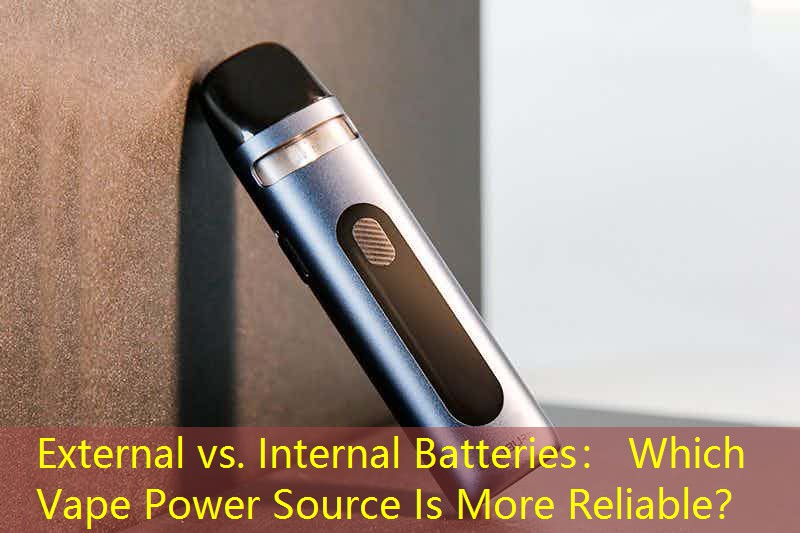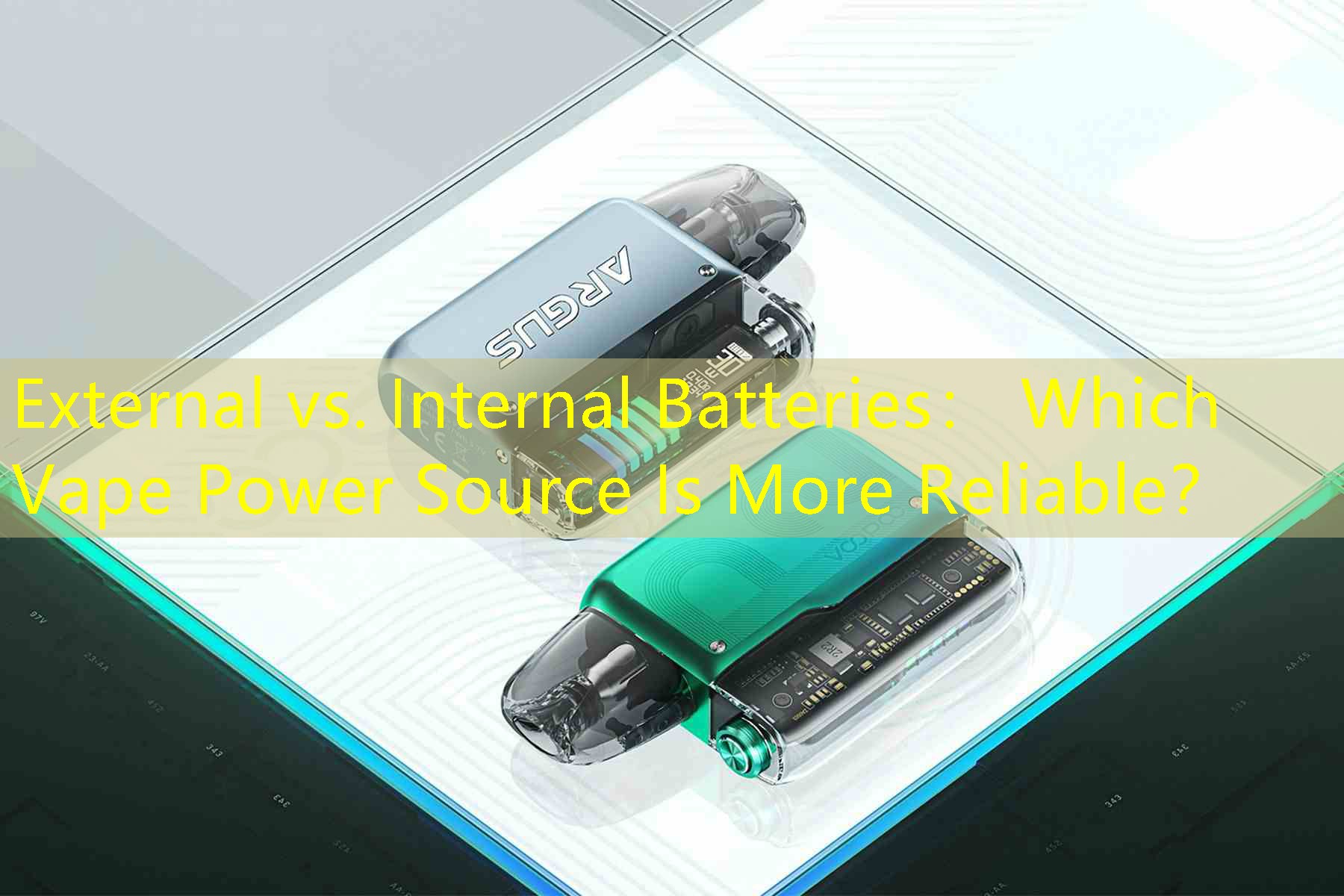1. Introduction to Vape Power Sources
The vaping industry has rapidly evolved, تقدم للمستخدمين العديد من الخيارات عندما يتعلق الأمر بأنواع الأجهزة وتكويناتها. أحد العناصر الأكثر أهمية التي تميز هذه الأجهزة هو مصدر الطاقة الخاص بها. تستخدم السجائر الإلكترونية عادةً بطاريات خارجية أو داخلية, حيث يحمل كل خيار مجموعة المزايا والعيوب الخاصة به. يمكن أن يساعد فهم هذه الاختلافات المستخدمين على اتخاذ قرارات مستنيرة فيما يتعلق بموثوقية تجارب الـvaping الخاصة بهم.
2. Overview of Internal Batteries
Internal batteries, تُعرف أيضًا باسم البطاريات المدمجة, مضمنة بشكل دائم داخل الجهاز. لا يمكن للمستخدمين استبدال هذه البطاريات, والتي عادة ما تكون خلايا أيون الليثيوم. يتم شحن هذه البطاريات مباشرة من خلال منفذ USB أو محول الشحن المدمج في الجهاز. Internal batteries are popular among beginners due to their convenience and the simplicity of not having to manage battery replacements.
3. Advantages of Internal Batteries
One major advantage of internal batteries is user-friendliness. New vape users often find it easier to charge a device without the hassle of purchasing and changing batteries. بالإضافة إلى, devices with built-in batteries often feature optimized power management systems that enhance battery longevity. Most modern internal battery devices incorporate various safety features, improving reliability during charging and use.
4. Disadvantages of Internal Batteries

لكن, there are some notable drawbacks to internal batteries. على سبيل المثال, once the battery’s lifespan diminishes, the entire device may need to be replaced since the battery cannot be changed independently. This process may be costly for frequent users. بالإضافة إلى ذلك, if the device malfunctions or experiences issues, users might be left with a non-functional vape since repairs could be complicated due to the battery being internal.
5. Overview of External Batteries
External batteries, على الجانب الآخر, refer to removable batteries that users can replace as needed. Devices that use external batteries typically have compartments or slots where these batteries can be inserted. Common types of external batteries include 18650 و 21700 lithium-ion cells, which have become favorites among advanced vaping enthusiasts due to their performance capabilities.
6. Advantages of External Batteries
One of the most significant benefits of external batteries is the flexibility they offer. Users can easily swap out depleted batteries for freshly charged ones, ensuring uninterrupted vaping sessions. This feature is especially appealing for heavy users or those who enjoy long vaping sessions without waiting for a recharge. علاوة على ذلك, external batteries often have better longevity, and many users appreciate the option to invest in high-performance battery brands to meet their needs.
7. Disadvantages of External Batteries
Despite their many benefits, external batteries also come with challenges. Managing multiple batteries requires vigilance to avoid confusion regarding power levels. Incorrect handling can lead to battery damage, which in turn can affect device performance and safety. بالإضافة إلى ذلك, external batteries must be stored and transported properly to prevent short circuits or other hazards, necessitating a level of responsibility that may intimidate newer users.
8. What is the most reliable power source for vapes?
The reliability of a vape power source largely depends on the user’s individual needs and preferences. For casual users or beginners, internal batteries offer simplicity and straightforward operation, which is beneficial in day-to-day use. على الجانب الآخر, seasoned vapers who seek performance and customization will likely find external batteries more reliable as they allow for personalized setups and easy upgrades.
9. How do internal and external batteries compare in terms of safety?
In terms of safety, both internal and external batteries come with specific risks, but they are managed differently. Internal batteries usually feature multiple safety mechanisms due to their integrated design, which can provide peace of mind for the user. لكن, if an internal battery fails, the entire device may be compromised. External batteries, while providing the ability to replace them, require users to be knowledgeable about safe handling practices to mitigate risks such as overheating and potential explosions.
10. Which power source is more cost-effective in the long run?

When considering long-term cost-effectiveness, external batteries often present a more economical choice. Although the initial investment in an external battery system may be higher, the ability to replace depleted batteries means the user can avoid the need to purchase a new device entirely. في المقابل, once an internal battery fails, the user may have to buy a new vape, which can accumulate significant costs over time. أخيرًا, users should assess their vaping habits and financial considerations to arrive at the best conclusion for their situation.







